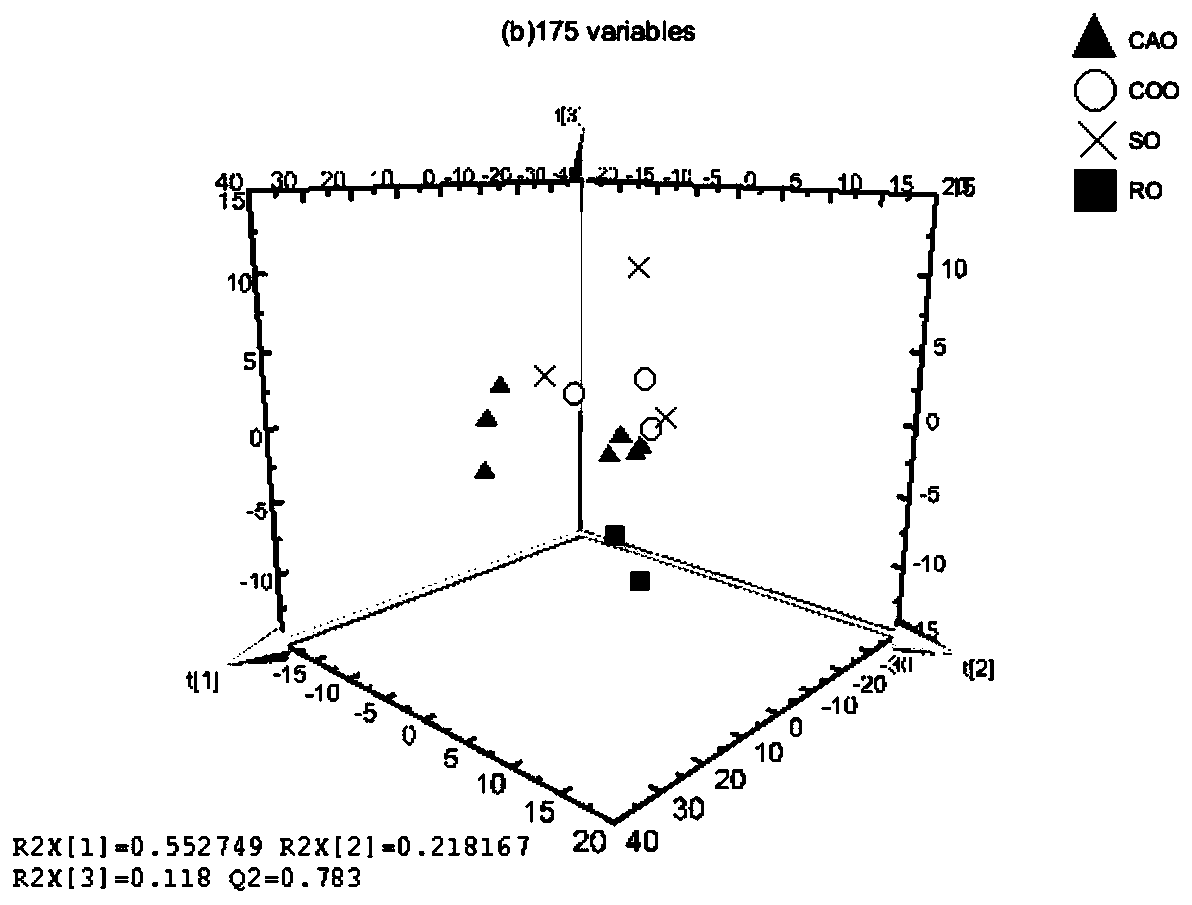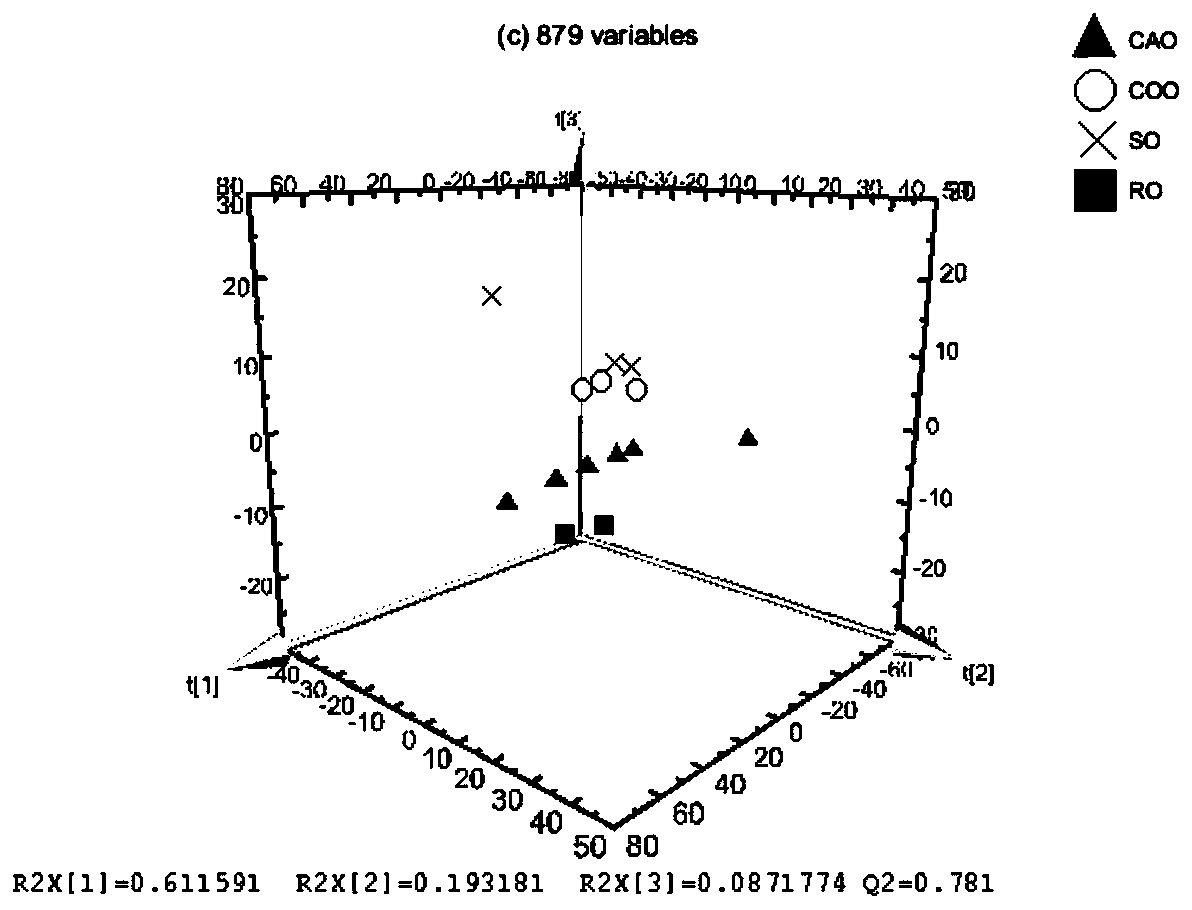A method for predicting the type and content of other adulterated oils in camellia oil
A technology of doping oil and camellia oil, applied in the field of chemical analysis, can solve the problems of low accuracy of qualitative and quantitative detection, etc.
Active Publication Date: 2019-10-01
NANCHANG UNIV
View PDF7 Cites 0 Cited by
- Summary
- Abstract
- Description
- Claims
- Application Information
AI Technical Summary
Problems solved by technology
The present invention aims to provide a method for predicting the types and contents of other adulterated oils in camellia oil aiming at the technical defects of the prior art, so as to solve the problem in the prior art that the qualitative and quantitative detection accuracy of other adulterated oils in camellia oil is relatively low. low technical issues
Method used
the structure of the environmentally friendly knitted fabric provided by the present invention; figure 2 Flow chart of the yarn wrapping machine for environmentally friendly knitted fabrics and storage devices; image 3 Is the parameter map of the yarn covering machine
View moreImage
Smart Image Click on the blue labels to locate them in the text.
Smart ImageViewing Examples
Examples
Experimental program
Comparison scheme
Effect test
Embodiment 1
Embodiment 2
Embodiment 3
the structure of the environmentally friendly knitted fabric provided by the present invention; figure 2 Flow chart of the yarn wrapping machine for environmentally friendly knitted fabrics and storage devices; image 3 Is the parameter map of the yarn covering machine
Login to View More PUM
 Login to View More
Login to View More Abstract
The invention provides a method of predicting types and contents of other adulterated oil in tea oil. The method includes the following steps: 1) collecting tea oil, maize oil, sunflower seed oil, and rapeseed oil in different types and brands, and doping the maize oil, sunflower seed oil and rapeseed oil with the tea oil at different ratio, and performing 1H NMR detection to obtain corresponding spectrums, and determining an optimum pretreatment method through a PCA score chart; and 2) further establishing qualitative and quantitative models through orthogonal partial least squares-determination analysis (OPLS-DA) and partial least squares (PLS), verifying the models, and finally identifying the models with a prediction set, when the adulteration quantity of the maize oil, sunflower seed oil and rapeseed oil is more than 5%, determination accuracy is higher than 97%. By means of the NMR data with the partial least squares, the volume fraction of adulterated oil can be quantitatively detected. The method is simple in operation and reliable in technology, and can quickly determine the types and quantities of the adulterated oil in tea oil.
Description
technical field The invention relates to the technical field of chemical analysis, and further relates to the application of nuclear magnetic resonance technology and chemometrics in the analysis of food components, in particular to a method for predicting the types and contents of other adulterated oils in camellia oil. Background technique Camellia oil, also known as camellia oil or camellia seed oil, is a pure natural high-grade edible vegetable oil extracted from the mature seeds of common camellia oleifera (Camellia oleifera Abel) in the family Theaceae. It is golden or light yellow in color, pure in quality, clear and transparent, and fragrant in smell , pure taste. Camellia oil is one of the four major woody vegetable oils in the world. The oil content of camellia oleifera seeds is generally 25-35%. The extracted camellia oleifera seed oil mainly contains unsaturated fatty acids such as oleic acid and linoleic acid. Similar, even some nutritional indicators are highe...
Claims
the structure of the environmentally friendly knitted fabric provided by the present invention; figure 2 Flow chart of the yarn wrapping machine for environmentally friendly knitted fabrics and storage devices; image 3 Is the parameter map of the yarn covering machine
Login to View More Application Information
Patent Timeline
 Login to View More
Login to View More Patent Type & Authority Patents(China)
IPC IPC(8): G01N24/08
Inventor 陈奕石婷朱梦婷聂少平谢明勇
Owner NANCHANG UNIV
Features
- R&D
- Intellectual Property
- Life Sciences
- Materials
- Tech Scout
Why Patsnap Eureka
- Unparalleled Data Quality
- Higher Quality Content
- 60% Fewer Hallucinations
Social media
Patsnap Eureka Blog
Learn More Browse by: Latest US Patents, China's latest patents, Technical Efficacy Thesaurus, Application Domain, Technology Topic, Popular Technical Reports.
© 2025 PatSnap. All rights reserved.Legal|Privacy policy|Modern Slavery Act Transparency Statement|Sitemap|About US| Contact US: help@patsnap.com



